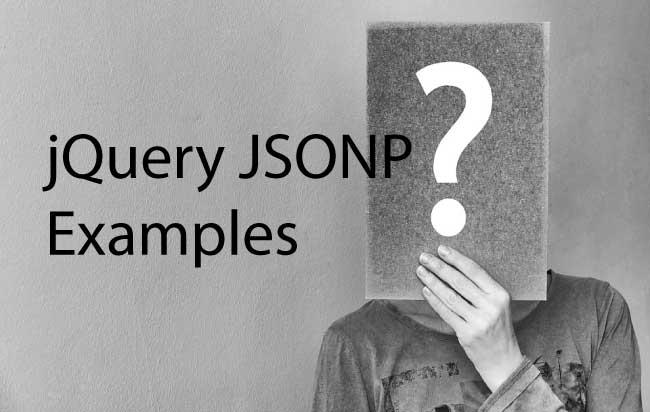What is JSONP and how to use it in jQuery & JavaScript

JSONP stands for JSON with padding. The padding refers the function call that wraps the JSON object.
What is JSONP – JSON vs JSONP
JSONP is JSON with a function call that wraps the JSON. See below:
JSON:
{
"id": 1,
"room": "main bedroom",
"items": [ "bed", "chest of drawers" ]
}
JSONP:
jsonpcallback({
"id": 1,
"room": "main bedroom",
"items": [ "bed", "chest of drawers" ]
});
The above 2 codes just has one difference which is the function call jsonpcallback() that is wrapping the JSON.
What is the use of JSONP
JSONP is used to bypass the Cross-Domain Request boundaries, under which the scripts that run on one domain are restricted to access the data from another page on different domain.
This is also known as Same-origin policy of the web browsers.
To explain this further, due to this Same-origin policy I cannot fetch JSON file which is located under somedomain.com, by running jQuery AJAX method on my domain yogihosting.com.
jQuery JSONP Example
Let see how to work with JSONP in jQuery.
In this Example I have a JSON file that is located on the URL :
http://www.demo.yogihosting.com/jquery/jsonp/data.json
This JSON file looks like:
{
"id": 1,
"room": "main bedroom",
"items": [ "bed", "chest of drawers" ]
}
Next with jQuery AJAX method I try to fetch this file – from my local PC.
$.ajax({
url: "http://www.demo.yogihosting.com/jquery/jsonp/data.json",
dataType: "json",
type: "POST",
contentType: "application/json; charset=utf-8",
success: function (result, status, xhr) {
alert(result);
},
error: function (xhr, status, error) {
alert("Error")
}
});
On my console window I get error stating –

I create a new JSON file but this time wrap it with a function call. This JSONP file location is:
http://www.demo.yogihosting.com/jquery/jsonp/data1.json
Its contents remain the same.
processJSONPResponse( {
"id": 1,
"room": "main bedroom",
"items": [ "bed", "chest of drawers" ]
})
The wrapped function is processJSONPResponse().
Next, update the jQuery AJAX code to put dataType: “jsonp” and jsoncallback property like this:
$.ajax({
url: "http://www.demo.yogihosting.com/jquery/jsonp/data1.json",
dataType: "jsonp", // jsonp
type: "POST",
jsonpCallback: 'processJSONPResponse', // add this property
contentType: "application/json; charset=utf-8",
success: function (result, status, xhr) {
console.log(result);
},
error: function (xhr, status, error) {
console.log("Result: " + status + " " + error + " " + xhr.status + " " + xhr.statusText)
}
});
In this way, now I can easily fetch a JSON file from another domain using the JSONP method.
Fetch JSONP using JavaScript
You can also fetch the JSONP contents using JavaScript. Here there are 3 main steps:
- 1.Create a script tag and give its src value to the JSONP file location.
- 2. Append this script tag to the page head.
- 3. Create a JavaScript function with the same name of the JSONP wrapping function.
The below JavaScript that will fetch the JSON file is given below:
function JavaScriptFetch() {
var script = document.createElement('script');
script.src = 'http://www.demo.yogihosting.com/jquery/jsonp/data1.json';
document.querySelector('head').appendChild(script);
}
function processJSONPResponse(data) {
alert(data);
}
DOWNLOAD the source codes:
This jQuery JSONP tutorial gives you the complete knowledge of how to by-pass the Same-origin policy of web browsers. Don’t forget to check other excellent jQuery tutorials in this site.







 Welcome to YogiHosting - A Programming Tutorial Website. It is used by millions of people around the world to learn and explore about ASP.NET Core, Blazor, jQuery, JavaScript, Docker, Kubernetes and other topics.
Welcome to YogiHosting - A Programming Tutorial Website. It is used by millions of people around the world to learn and explore about ASP.NET Core, Blazor, jQuery, JavaScript, Docker, Kubernetes and other topics.